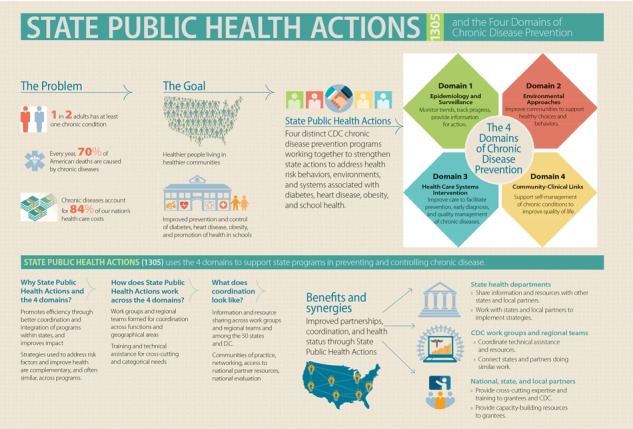Figure 1.

Overview of the State Public Health Actions to Prevent and Control Diabetes, Heart Disease, Obesity and Associated Risk Factors, and Promote School Health program (State Public Health Actions) for state health departments and the 4 domains of chronic disease prevention. The 4 domains provide focus for State Public Health Actions to address chronic disease at the individual level by promoting health care interventions and at the population level by developing policies and creating environments that promote health.
